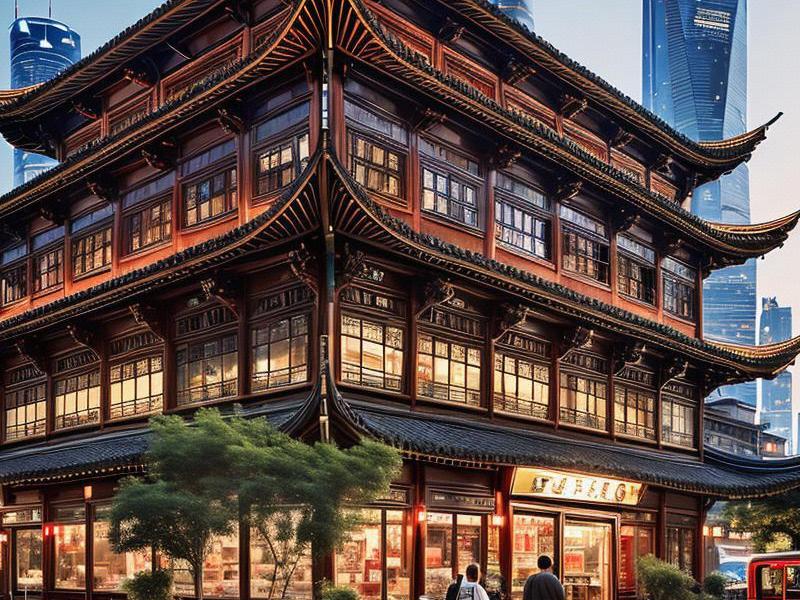Exploring the Rich Tapestry of Shanghainese Culture and Its Surrounding Areas
⏱ 2025-04-20 00:00 🔖 阿拉爱上海千花网
📢0℃

Shanghai, often referred to as the "Pearl of the Orient," is a city that seamlessly blends the old with the new. As one of the most dynamic cities in China, it is a hub of commerce, finance, and culture. But beyond its skyscrapers and bustling streets lies a deep and complex cultural heritage that has been shaped by centuries of history and the influences of various cultures.
The history of Shanghai dates back thousands of years, but it was during the 19th century that the city began to take on its unique character. The opening of the Treaty Ports in the mid-19th century brought an influx of foreign influence, particularly from Western countries. This period saw the establishment of the International Settlement and the French Concession, which left a lasting architectural legacy that can still be seen today.
Walking along the Bund, one of Shanghai's most iconic landmarks, is like stepping back in time. The Bund is lined with grandiose buildings that once housed the offices of foreign banks and trading companies. These neoclassical and art deco structures, with their intricate facades and beautiful masonry, stand as a testament to the city's colonial past. At night, the Bund is illuminated, casting a magical glow over the Huangpu River, which separates the Bund from the Pudong skyline.
Pudong, on the other side of the Huangpu River, is a stark contrast to the historic charm of the Bund. This area has undergone rapid transformation over the past few decades, emerging as a symbol of modernity and progress. The iconic Oriental Pearl Tower, with its unique design resembling a pearl on a string, is a must-see attraction. Completed in 1994, it was once the tallest building in Asia and remains an important landmark in Shanghai's skyline.
爱上海同城对对碰交友论坛
The Lujiazui Financial District, home to some of the world's tallest skyscrapers, including the Shanghai Tower, Jin Mao Tower, and the Shanghai World Financial Center, is another area that showcases Shanghai's modern face. These buildings are not just architectural marvels but also represent the city's status as a global financial hub.
Art and culture are deeply ingrained in the fabric of Shanghai. The city boasts a vibrant art scene, with numerous galleries, museums, and cultural institutions. The Shanghai Museum, located in People's Square, is renowned for its extensive collection of Chinese art, including ancient ceramics, calligraphy, and paintings. The museum's collection spans thousands of years, offering visitors a glimpse into the rich history of Chinese civilization.
For those interested in contemporary art, the M50 Creative Park is a haven for artists and art enthusiasts. Formerly a textile factory, this industrial complex has been transformed into a space filled with galleries, studios, and cafes. It is a great place to explore experimental and avant-garde art, as well as to experience the creative energy of Shanghai's artistic community.
上海龙凤千花1314
Cuisine is an essential part of any exploration of a city's culture, and Shanghai is no exception. The city is famous for its unique culinary style, which combines elements of traditional Jiangsu and Zhejiang cuisine. Shanghainese cuisine is known for its light, fresh flavors and delicate presentation.
One of the most popular dishes in Shanghai is Xiaolongbao, or soup dumplings. These small, translucent dumplings are filled with juicy pork and broth, and they are a favorite among locals and tourists alike. Another delicacy is Shengjianbao, or pan-fried dumplings, which are crispy on the bottom and tender on top. These dumplings are often enjoyed with a cup of fragrant jasmine tea.
For a truly authentic Shanghainese dining experience, visitors should head to the city's traditional tea houses. These establishments offer a serene environment where one can enjoy a pot of tea while savoring dim sum and other small dishes. The tea houses are also a great place to observe the local culture and to experience the art of tea ceremony.
上海龙凤419油压论坛
Beyond the city limits, Shanghai's surrounding areas offer a wealth of cultural and natural attractions. The ancient town of Zhujiajiao, located about an hour from the city center, is a picturesque water town with a history that dates back over 1,700 years. The town is crisscrossed by canals and lined with traditional architecture, making it a perfect destination for those seeking a glimpse of old China.
The Yu Garden, another must-visit attraction, is a classical Chinese garden located in the heart of the Old City. This beautifully landscaped garden features pavilions, ponds, rockeries, and lush greenery, and it offers a tranquil escape from the hustle and bustle of the city.
In conclusion, exploring Shanghainese culture and its surrounding areas is a journey through time and space. From the historic landmarks of the Bund and the French Concession to the modern skyscrapers of Pudong, from the vibrant art scene to the delicious cuisine, Shanghai offers a rich and diverse cultural experience. And with its surrounding areas, such as Zhujiajiao and the Yu Garden, the city provides a deeper understanding of the region's history and traditions. Whether you are a history buff, an art lover, a foodie, or simply someone looking to immerse yourself in a unique cultural experience, Shanghai has something to offer everyone.
Shanghai’s Gilded Lounges: Where Art Deco Opulence Meets AI-Curated ExtravaganceThe Great Shanghai Convergence: How the Mega-City Is Reshaping the Yangtze Delta Region"Code and Qipao: How Shanghai's Women Are Rewriting the Rules of Modern Femininity"The Yangtze River Delta Megaregion: Shanghai's Bold Vision for Integrated Urban Future《海派丽人启示录:上海女性审美变迁与都市文化演进》弄堂里的"新主人":上海城市更新中的社区共生与文化新生Shanghai's Nocturnal Revolution: How the City Redefines Luxury Entertainment《从"百乐门"到"数字包厢":解码上海娱乐会所的百年进化史》文章开始Shanghai's Beauty: A Blend of Tradition and ModernityShanghai 2045: The Living Laboratory of Urban Futurism

